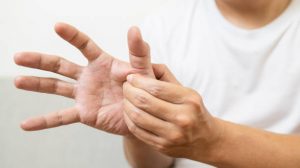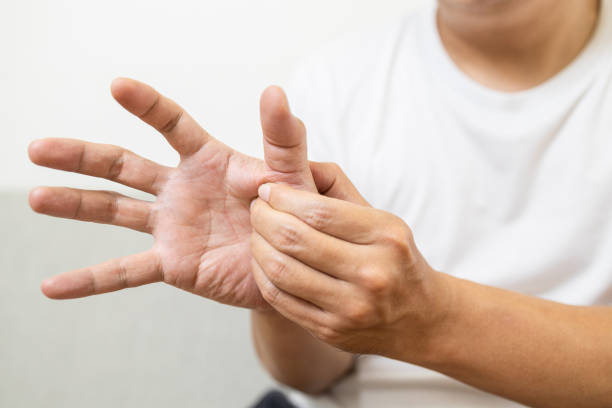Have you been experiencing some sort of discomfort in your thumb and wrist each time you use it? In the beginning, you may feel a slight twinge, but now it has reached the point that holding a cup of coffee or peeling fruit is painful. Do you wonder what’s going on with your hand? Then, it’s time to understand better the condition you might be suffering from, known as De Quervain Disease.
What is De Quervain’s syndrome?
This condition was named after a Swiss physician who first described this medical condition as swelling of your muscles and nearby tissue at the base of your thumb. These muscles allow your thumb to slide outward from the rest of the fingers. As a result, you use your thumb throughout the day to work on a laptop, cook, do gardening, and perform other daily tasks.
Patients with De Quervain’s Syndrome feel the outer part of their thumb moving down to the wrist is swollen. Your wrist and thumb hurt as the tendons there are swollen. Those ligaments attach muscles to your bones.
The muscles are enclosed in a tunnel of tissues. When inflamed, they constrict and swell movement as they cannot move easily through the tunnel. You then feel the pain while twisting the wrist, holding an object, or making a fist.
Cause of De Quervain Disease
The cause of De Quervain Disease is not completely clear, but it is strongly linked with the overuse of the compartment as mentioned earlier present in our hands. Overuse of these tendons leads to deterioration of tissues. Our body slowly adapts to these changes by thickening those weak tissues. Thickening of these tendons leads to the trapping of muscles within the sheath, leading to poor hand movement and pain.
Any activity leading to chronic overuse of our wrist and thumb leads to the worsening of this problem. Common activities include;
- Typing
- Playing the piano
- Fishing
- Hammering/sawing
New mothers are commonly affected by repeatedly picking up their baby with the thumb, and the rest of the fingers held out from the baby’s hand. However, with the great use of smartphones over the past decade comes a new group of sufferers! Those groups who spend hours typing and sending text messages on mobile phones are at higher risk of suffering from this disorder.
Symptoms
De Quervain’s disease’s main symptom is a sore wrist and thumb movement. Any movement where the thumb moves are painful and the pain is mostly felt around the snuffbox area of the wrist.
Other symptoms include:
- Swelling over the snuffbox area
- Restricted wrist and thumb movement
- Pain and difficulty while holding objects
- Pain that emits up the forearm
- Clicking and popping of the muscles as they move through sheaths
- Weakness of the thumb
- Tingling and pins and needles in the hand
Treatment
It would be best if you first undergo a proper diagnosis to get the right treatment for this syndrome. You may use any of the following treatment options to help you in this process:
Soft tissue-releasing the tight or shortened muscles help control wrist and thumb movements. You may get the message from the neck to the hand during the treatment.
Mobilization of the joints. Focus on neck joints, down to the smaller wrist and thumb joints.
Stretching tight muscles during treatment is also a part of a home exercise plan that you can try.
Taping from thumb to forearm to reduce pain and improve hand function. This aid immobilizes your thumb and wrist to help keep the affected area in place and reduce the worsening that causes flare-ups. You wear this splint throughout the day for as long as six weeks.
Some other things you can do to improve this condition include:
Ice or heat pack therapy helps increase blood flow through the area to help with recovery and reduction in pain.
Exercise helps strengthen and stretch weak and tight tendons.
You can also follow some effective steps to fasten your healing process and improve your mental health. Continuous ice therapy on the area you feel discomfort and pain and avoid activities that make it feel worse. Repetitive hand movement and pinching using your thumb and fingers worsen De Quervain’s Disease.
So, if you have pain in your thumb and wrist that suggests you are suffering from De Quervain’s Tenosynovitis, don’t ignore it and think it will go away. The longer you wait to get the treatment, the more deep-rooted your symptoms get, and it turns out to be harder to get rid of this condition.
Other treatment options include steroid injection, splinting, and in serious cases, people also for surgery. These forms are either more restricting to start with or invasive. Always try to take a gentle approach to initiate and rely on these treatments for those who do not respond to gentler methods.


















Add Comment